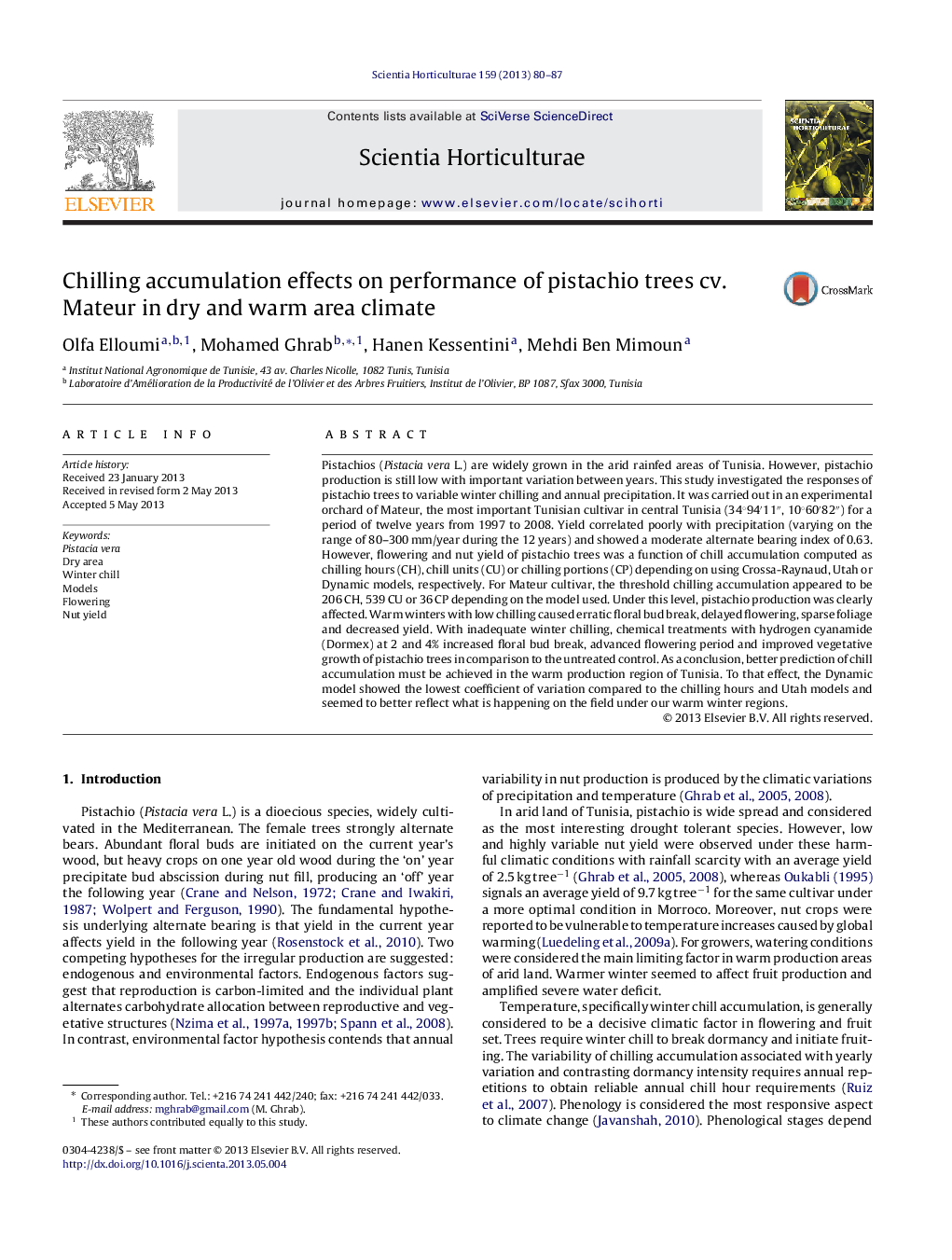| Article ID | Journal | Published Year | Pages | File Type |
|---|---|---|---|---|
| 4567224 | Scientia Horticulturae | 2013 | 8 Pages |
•Lack of winter chill affected significantly pistachio flowering and nut yield.•A significant correlation between nut yield of pistachio and winter chill.•No significant correlation could be demonstrated for nut yield vs. precipitation.•In warm regions, hydrogen cyanamide could be used as rest breaking agent.•Dynamic model could be adopted as the suitable model for predicting winter chill.
Pistachios (Pistacia vera L.) are widely grown in the arid rainfed areas of Tunisia. However, pistachio production is still low with important variation between years. This study investigated the responses of pistachio trees to variable winter chilling and annual precipitation. It was carried out in an experimental orchard of Mateur, the most important Tunisian cultivar in central Tunisia (34°94′11″, 10°60′82″) for a period of twelve years from 1997 to 2008. Yield correlated poorly with precipitation (varying on the range of 80–300 mm/year during the 12 years) and showed a moderate alternate bearing index of 0.63. However, flowering and nut yield of pistachio trees was a function of chill accumulation computed as chilling hours (CH), chill units (CU) or chilling portions (CP) depending on using Crossa-Raynaud, Utah or Dynamic models, respectively. For Mateur cultivar, the threshold chilling accumulation appeared to be 206 CH, 539 CU or 36 CP depending on the model used. Under this level, pistachio production was clearly affected. Warm winters with low chilling caused erratic floral bud break, delayed flowering, sparse foliage and decreased yield. With inadequate winter chilling, chemical treatments with hydrogen cyanamide (Dormex) at 2 and 4% increased floral bud break, advanced flowering period and improved vegetative growth of pistachio trees in comparison to the untreated control. As a conclusion, better prediction of chill accumulation must be achieved in the warm production region of Tunisia. To that effect, the Dynamic model showed the lowest coefficient of variation compared to the chilling hours and Utah models and seemed to better reflect what is happening on the field under our warm winter regions.
